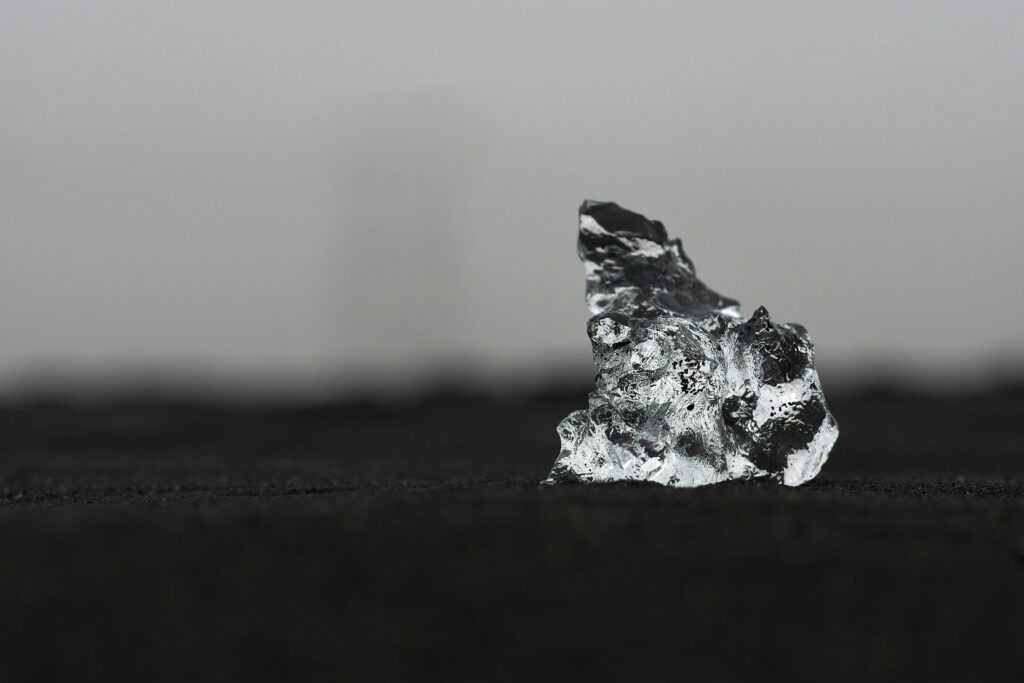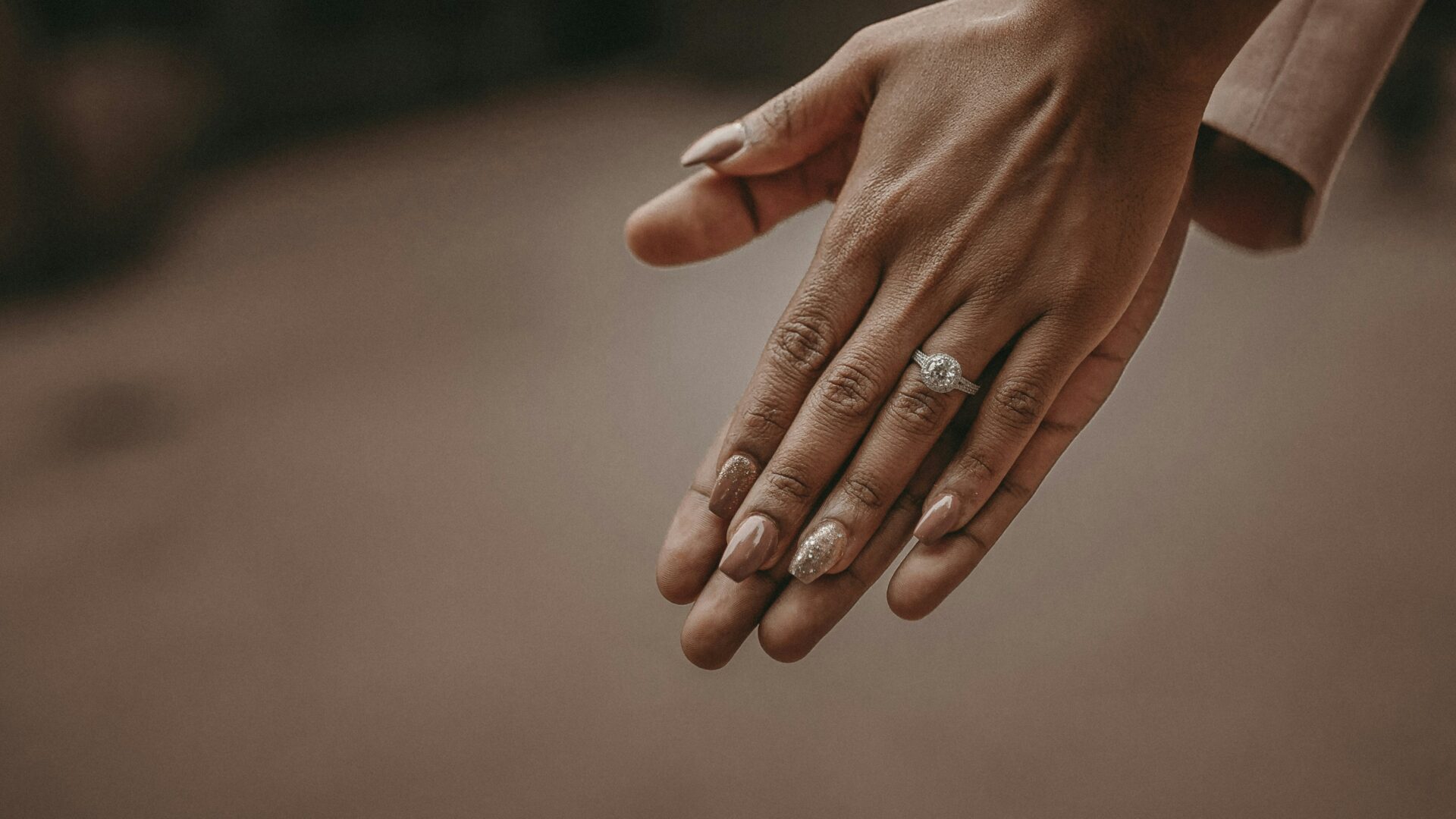Diamonds sparkle, signify forever, and often cost a small fortune. So, for those in Canada considering such a purchase, or maybe just curious about an heirloom, knowing how to tell if a diamond is real is paramount. Nobody wants to discover their supposed treasure is just a fancy imitation, right?
Consider this your go-to guide for figuring out if that rock is the real deal. We’ll cover everything from quick home experiments to deciphering what the professionals look for using specialized tools. You’ll learn how you tell if a diamond is real and how to test if a diamond is real. Think of it as equipping yourself with the knowledge to shop confidently, ensuring your investment, emotional and financial, is worthwhile. Let’s get started and unlock the secrets!
Crucial Signs to Determine Whether a Diamond Is Real
Before you start any tests, get familiar with what makes a real diamond unique. True diamonds have characteristics shaped over ages under intense conditions. These traits are difficult to mimic perfectly in a lab. Subtle differences in how they shine, how clear they are, and how they play with light are key.
Visual Inspection: Clarity, Imperfections, and Brilliance
Start by giving it a good look. This is the first step in understanding how to identify a diamond. All you need is a sharp eye and a little know-how, no expensive equipment.
- Clarity and Imperfections: This might sound odd, but tiny flaws can be a good sign. Real diamonds, cooked up in the Earth’s depths, almost always have tiny imperfections inside (inclusions) or minor blemishes on the surface. Think of them as unique birthmarks, like fingerprints. Gemologists often use these inclusions to ID individual diamonds. Since perfect diamonds are super scarce, they’re crazy expensive. So, if a diamond looks too perfect, even under magnification with a jeweller’s loupe, be wary. The Gemological Institute of America (GIA) will tell you that “flawless” diamonds represent only a tiny percentage.
- Brilliance and Fire: If sparkle is what you love, this is where it counts. The stunning allure of a diamond is largely due to these optical characteristics.
- Brilliance is how intensely white light bounces back from a diamond’s precisely cut facets. A real diamond? It shines bright. The facets’ angles and proportions make the difference.
- The rainbow-coloured flashes that happen when light travels through the diamond are caused by fire. These vibrant colors are a signature of the real thing, giving it lots of flash. Some fakes try to sparkle, but they often lack that distinct fire and appear dull.
Characteristics of Real Diamonds (Hardness, Light Refraction)
Two things set real diamonds apart without a doubt: they’re super hard, and they bend light like crazy. This comes down to how the carbon atoms bond together within the diamond.
- Hardness: With a perfect score of 10 on the Mohs scale, diamonds are the clear winners. This makes them able to scratch almost anything without getting scratched themselves. You need another diamond to scratch a diamond. All that comes from super-strong bonds between the carbon atoms in its structure.
- Light Refraction: Diamonds have a super-high refractive index, bending light a lot as it enters. The secret to the glitter we all adore is that bending. Light enters, bounces around inside off those precisely angled facets, then exits with an amazing, dazzling show. Fakes usually let more light pass through without that awesome effect.

At-Home Methods: How to Test If a Diamond Is Real
While these tests aren’t foolproof, think of them as first impressions, not final verdicts; they can give you some clues to whether your diamond is real. If you get a weird result, consider it a nudge to get some more professional testing done.
Fog Test
Here’s how to check if a diamond is real with this test. It is quick and easy. It relies on how well diamonds conduct heat.
- Grip the stone carefully, ideally with tweezers to avoid getting fingerprints on it.
- Breathe warm air directly onto the stone, as if you were fogging a mirror.
Real Diamond: The fog should vanish almost instantly, in a second or so. That’s because real diamonds are heat-dissipating champs, leaving the surface clear really quickly.
Fake Diamond: A fake stone won’t dissipate heat so quickly, so the fog will stick around for longer. Think for three to five seconds.
Water Test
This checks to see if a diamond is real, by measuring if a diamond has a decent density
- Fill a glass with water, nearly to the top. Steady, now.
- Drop the loose stone in
Real Diamond: A real diamond is dense and will sink straight away. Its density helps it sink fast.
Fake Diamond: Fakes will often float, indicating they are less dense.
Scratch Test (Use with Extreme Caution)
We only recommend this with extreme caution and only if you’re testing against something you don’t mind potentially damaging, like a piece of glass. Never try to scratch another diamond or a precious metal with your stone, as you could cause damage.
- Get a piece of glass (a mirror works). Make sure it is clean.
- Press the stone against the glass and drag it. Not too hard.
Real Diamond: A real diamond will scratch the glass
Fake Diamond: Fakes won’t be able to scratch the glass effectively. They might slide across, leaving no mark at all.
Newspaper Test
This will let you know the diamond is real by ingeniously showcasing its light-bending skills. It uses the capacity of a stone to distort appearance by scattering light.
- Put the loose stone flat side down over the newspaper text. Make sure you have a good amount of light in the room.
Real Diamond: A diamond has a high refractive index. When you view it over text, the stone will scatter light and make it hard to read the text below. Due to intense light, expect the stone to distort the text or make it unrecognizable.
Fake Diamond: Fakes that do not possess a high refractive index will let you partially read letters through. The low clarity of the text helps determine if a simulant is in use.
UV Light Test
Diamonds glow under ultraviolet (UV) light.
- In a dark room, set the stone under a UV lamp. Set it in a dark environment to observe any emission of light.
Real Diamond: A third of real diamonds will emit a blue when exposed to UV light. However, some diamonds fail to fluoresce or will emit yellow or green. If a blue glow is emitted from the lamp, it is not a confirmation that it is authentic. In the diamond structure, the existence of nitrogen will cause different reactions.
Fake Diamond: Simulants might emit other colours; however, they will not emit blue when exposed to UV.
Heat Test (Strongly Not Recommended Without Professional Supervision)
This checks a diamond’s ability to dissipate heat. Under no circumstances should you attempt this test without the guidance and supervision of a trained gemologist. The stones will break if tested in this way.
- Professionals will use this test on your behalf.
Real Diamond: A true diamond can withstand dramatic temperature change, as it cannot break or shatter.
Fake Diamond: Because simulants cannot withstand extreme changes in temperature, they can cause the stone to crack.
How to Check If a Diamond Is Real: Using Tools
Specialized tools offer a thorough gemstone evaluation. They offer detailed examinations of properties and offer quantitative measurements.
Loupe or Magnifier Inspection
A loupe offers a 10x magnification to help identify a diamond. Minute details can be examined and are invisible to the eye.
- Securely hold the stone in place. Make sure the lighting is adequate.
Real Diamond: Birthmarks can be used to verify a stone’s origin. Review facet edges for sharpness.
Fake Diamond: A fake appearance cannot be used to verify a stone. There may be gas bubbles trapped inside.
Diamond Tester Device (Thermal Conductivity)
Handheld electronic devices help you test how to tell if a diamond is real by precisely measuring how heat passes through gemstones.
- After carefully reading the instructions, turn the tester on.
- Touch the probe on the stone, and be sure the surface is clean for accuracy.
Real Diamond: Devices will beep, and the thermal conductors will help show the stone.
Fake Diamond: Without proper heat distribution, devices will indicate that the stone is a fake and made of inadequate thermal conducting materials.
Refractometer (Professional Use)
Refractometers are instruments used by gemologists to accurately measure light.
Real Diamond: Gemologists will determine the refractive index. Diamonds range from 2.417 to 2.419.
Fake Diamond: Fake diamonds will provide a means of distinguishing and unpredictably exhibit readings.
How to Identify a Diamond Professionally
To ensure diamond authenticity, certified gemologists are the best resource.
When and Why to Visit a Certified Gemologist
If you are thinking about buying, seek a gemologist. They offer advanced knowledge and access.
What to Expect: Tools, Lab Analysis, and Documentation
When you visit a gemologist, they will use a range of tools beyond what we’ve discussed, possibly including:
- Microscopes: For highly magnified views of inclusions and surface characteristics.
- Specific gravity liquids: To precisely measure density.
- Raman Spectrometry: Advanced tests to analyze the molecular structure.
After their analysis, a reputable gemologist will provide you with documentation detailing their findings.
Requesting a GIA or IGI Certificate
If you are making a purchase, find someone who specializes in the area.
- Offer unbiased assessments and guarantee results; the most reliable lab is GIA (Gemological Institute of America).
- Comprehensive grading is provided by IGI (International Gemological Institute).
Certificates confirm the diamond is real.
Common Diamond Simulants and How to Spot Them
Check to see you’re aware of the possibilities.
FAQs: How Can You Tell If a Diamond Is Real?
- Can I test at home safely?
Yes, your stone won’t be harmed by many of the at-home tests (fog, water, newspaper, and UV). Only a non-precious surface should be used for the extremely cautious scratch test. Without expert supervision, the heat test is not advised.
- Is moissanite considered a real diamond?
Moissanite is not a real diamond, even if durable.
- Do fake diamonds still pass thermal tests?
Fake diamonds can pass tests. It’s important to seek professionals and their advice to ensure no fault.
Key Takeaways
How can you tell a diamond is real? Do not overpay for fakes. Use these tips:
- Closely observe its nature.
- Use safe tests at home
- Study simulants
- Consult the experts.
Spotting a real diamond can be easy when informed. Contact an expert if help is required.

